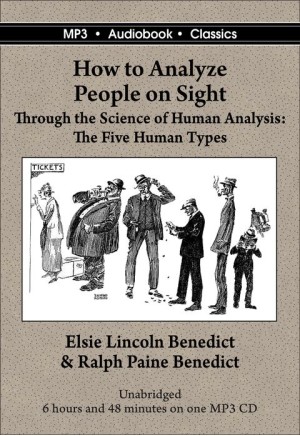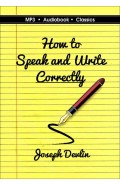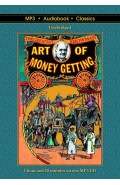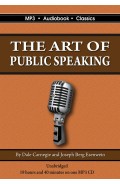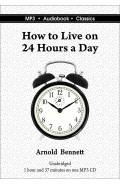| Track | Section | Reader | Length |
| 01 | Front Matter | Carl Manchester | 4:24 |
| 02 | Human Analysis | Carl Manchester | 41:36 |
| 03 | Chapter 1, part 1 | Stephanie Lee | 22:20 |
| 04 | Chapter 1, part 2 | hearhis | 30:24 |
| 05 | Chapter 2, part 1 | Lily-LLM | 32:08 |
| 06 | Chapter 2, part 2 | Lily-LLM | 28:32 |
| 07 | Chapter 3, part 1 | Paul Andrews | 20:37 |
| 08 | Chapter 3, part 2 | Paul Andrews | 22:20 |
| 09 | Chapter 4, part 1 | Miriam Esther Goldman | 21:49 |
| 10 | Chapter 4, part 2 | Esther | 22:21 |
| 11 | Chapter 5, part 1 | Stephanie Lee | 20:58 |
| 12 | Chapter 5, part 2 | Paul C. Newman | 26:06 |
| 13 | Chapter 6, part 1 | TriciaG | 24:14 |
| 14 | Chapter 6, part 2 | TriciaG | 31:14 |
| 15 | Chapter 7, part 1 | Paul C. Newman | 26:46 |
| 16 | Chapter 7, part 2 | Bill Mosley | 34:36 |
Notes
Running Time: 6 hours and 48 minutes
Read by: Multiple readers
Book Coordinator: Carl Manchester
Meta Coordinator: Carl Manchester
Proof Listener: iamartin
Artwork
Cover: Frontispiece illustration from the 1921 edition.
Inset: Title page from the 1921 edition.
Inset: Elsie Lincoln Benedict, date and author unknown.
Insert: Illustrations of the five types.
Recordings
These recordings were made using the author’s original published work, which is in the public domain. The readings were recorded by members and volunteers of Librivox.org, which has generously made the recordings available to the public domain. The audio files have been lightly edited and have been engineered using professional audio tools for maximum sonic quality. While Librivox condones the sale and distribution of these recordings, it is not associated with the management or operations of MP3 Audiobook Classics.
The early 20th century was a period of intense growth and transformation, not least in the thinking about fundamental human attributes and activities. Analysis and science seemed to be the obvious secret to economic progress, which was felt to be the key to overall well-being. How to Analyze People on Sight, published in 1921, was very much a product of that time. The well-educated Benedicts brought the language of science and discipline of categorization to bear on human appearance, developing a system where five basic body types were used to define corresponding emotional and behavior patterns. The first chapter outlines the premises of Human Analysis. The next five discuss the profiles – Alimentative, Thoracic, Muscular, Osseous, and Cerebral – often to be found in blended combinations with various degrees of influence. The remaining chapters discuss the types that should and should not marry one another and the best vocations for each type. The underlying premise is that the biology drives destiny, and with knowledge in hand, one can make better informed decisions about oneself and others. While it takes the subject matter seriously, it is done so with a light touch that allows for humor. The book has remained popular over the years, and continues to be one of the most downloaded ebooks in the public domain. Contemporary readers range widely in their response to the work. Most acknowledge that it is not really scientific as we know it today, and that it suffers by limiting its analysis largely to Caucasian peoples. Some find it biased and lacking in evidence, but many find it useful and insightful.
Play sample:
Download a PDF datasheet
| Item Info | |
| EAN - DVD case | 0683422134913 |
| Media | MP3 CD |
| Package | DVD Case |
| Author | Elsie Lincoln Benedict (1885 - 1970) and Ralph Paine Benedict |
| Year | 1921 |
| Recording | |
| Read by | Multiple readers |
| Length | 6 hours and 48 minutes |
| Type of Reading | Collaborative |
How to Analyze People on Sight
- Author: Elsie Lincoln Benedict
- Product Code: DB-1172
- Availability: In Stock
-
$9.99
Available Options
Related Products
How to Speak and Write Correctly
“Every person of intelligence should be able to use his mother tongue correctly. It only requires a ..
$9.99
The Art of Money Getting
Learn The 20 Time Tested Business Rules To Attract More Money, More Prospects and More Customers To ..
$9.99
The Art of Public Speaking
Many people dread the prospect of having to speak in front of an audience. Others have the urg..
$11.99
How to Live on 24 Hours a Day
How to Live on 24 Hours a Day, published in 1910, offers practical advice on how to effectively use ..
$9.99

